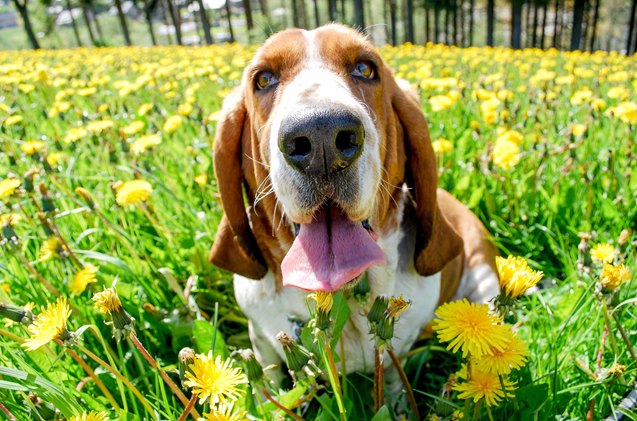What is a Scenthound?

The FCI currently recognizes over 420 different dog breeds. Though each breed is unique, they are divided into categories based on similarities in purpose. For example, herding breeds are all grouped together as are pointers, retrievers, and terriers. Another group of dog breeds that you may not be as familiar with is the scenthound group. Keep reading to learn what a scenthound is and what you might need to know to own and care for one of these breeds.
A Word About History and Breeding
Some of the earliest dog breeds known to man were giant Molossian dogs kept by the Ancient Greeks and brought to Europe by Phoenician traders sometime during the sixth century BC. Originally used as dogs of war, these dogs became the early ancestors of dogs in the mastiff type. Though they had a long history of fighting, these dogs were eventually recognized for their scenting ability by the Celtics who began using them for hunting. Eventually, these large scenthounds were bred with smaller, speedier breeds to develop the ancestors of modern scenthound breeds.
Related: Top 10 Hunting Dog Breeds
For many centuries, dogs were bred to one another without much thought. Selective breeding resulted in the development of certain characteristics or traits, but it was not as formal as it is today. Dogs were classified according to the job they were bred to perform, not for any physical standard. It wasn’t until the Middle Ages that selective breeding for dogs of the scenthound type truly began and resulted in the St. Hubert Hound, a direct ancestor of the modern Bloodhound. Over time, other breeds were developed for their scenting ability, sociable temperament, and desire/ability to hunt with little direction from humans. Eventually they also came to be specialized for certain terrains or climate and specific types of game.
Care and Training Tips for Scenthounds
Part of what makes a scenthound a scenthound is his independent nature. These dogs are bred for their sociable temperament which enables them to work well in packs with little direction from human hunters. While this trait is valuable in a hunting environment, it does lead to certain challenges – it is not uncommon for scenthounds to develop a stubborn side. These dogs are also likely to be easily distracted in an outdoor environment and they may become bored easily as well.
Related: What is Tracking Training for Dogs?
To get the most out of your training sessions, start by choosing a reward that will be highly motivating for your dog as an individual. Keep in mind that not all rewards have to be food, as well. For example, if you’re trying to train your scenthound to heel on a leash but he gets easily distracted by a scent, you might reward him by allowing him to walk after the scent. If you choose to use food rewards, make sure the treats are small enough that they won’t significantly increase your dog’s daily calorie intake but that they are appealing enough to keep your dog’s attention.
In addition to training your scenthound, you’ll also need to meet certain basic needs and requirements. These dogs require a great deal of exercise to include both physical and mental stimulation. Make sure your dog has plenty of time and space to run outdoors – if you have a fenced yard where he can safely follow scents, all the better. Early socialization and training are both of the utmost importance, and you make sure that your dog’s diet is properly balanced as well.

Kate Barrington is the loving owner of two cats (Bagel and Munchkin) and a noisy herd of guinea pigs. Having grown up with golden retrievers, Kate has a great deal of experience with dogs but labels herself a lover of all pets. Having received a Bachelor's degree in English, Kate has combined her love for pets and her passion for writing to create her own freelance writing business, specializing in the pet niche.
More by Kate Barrington























